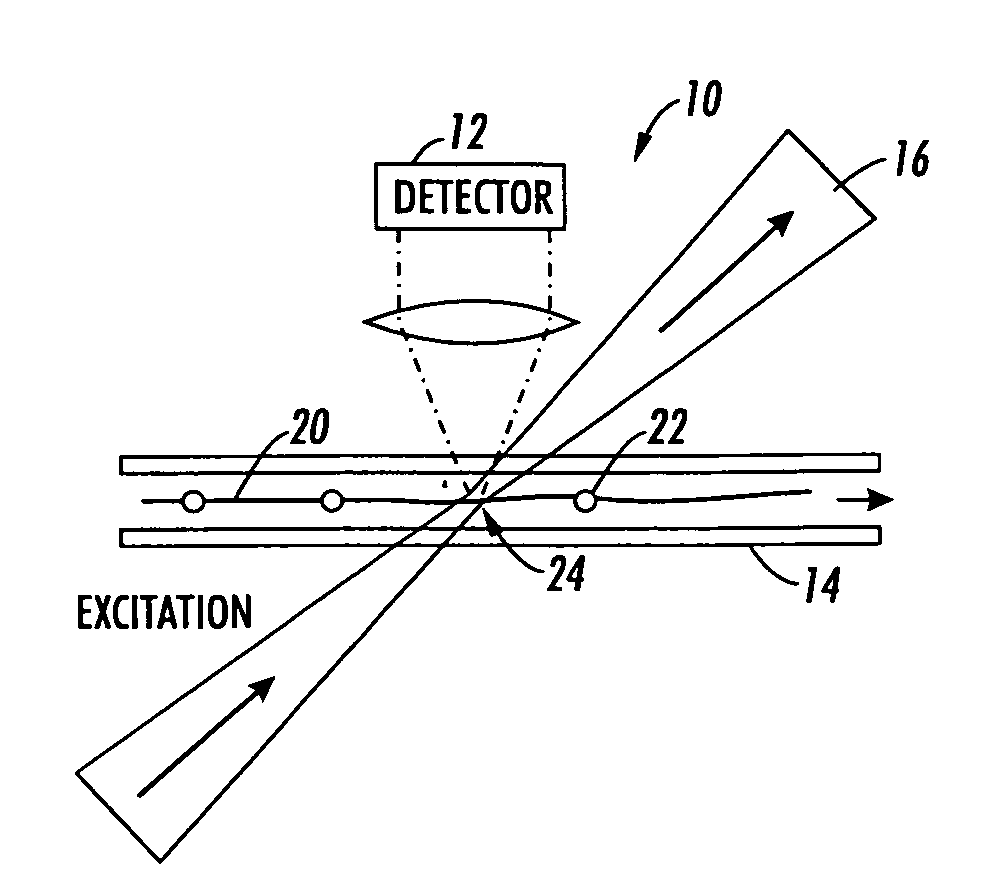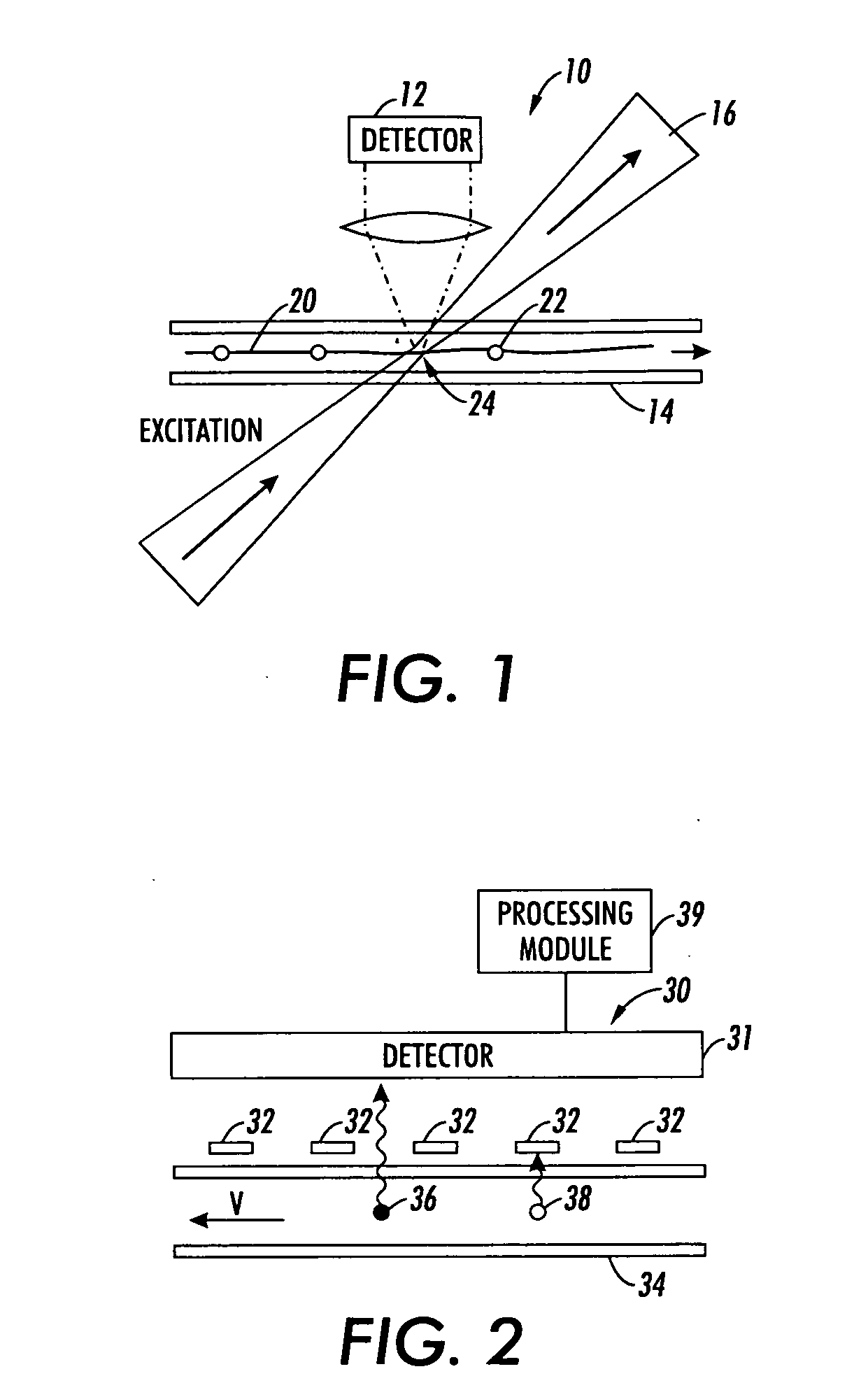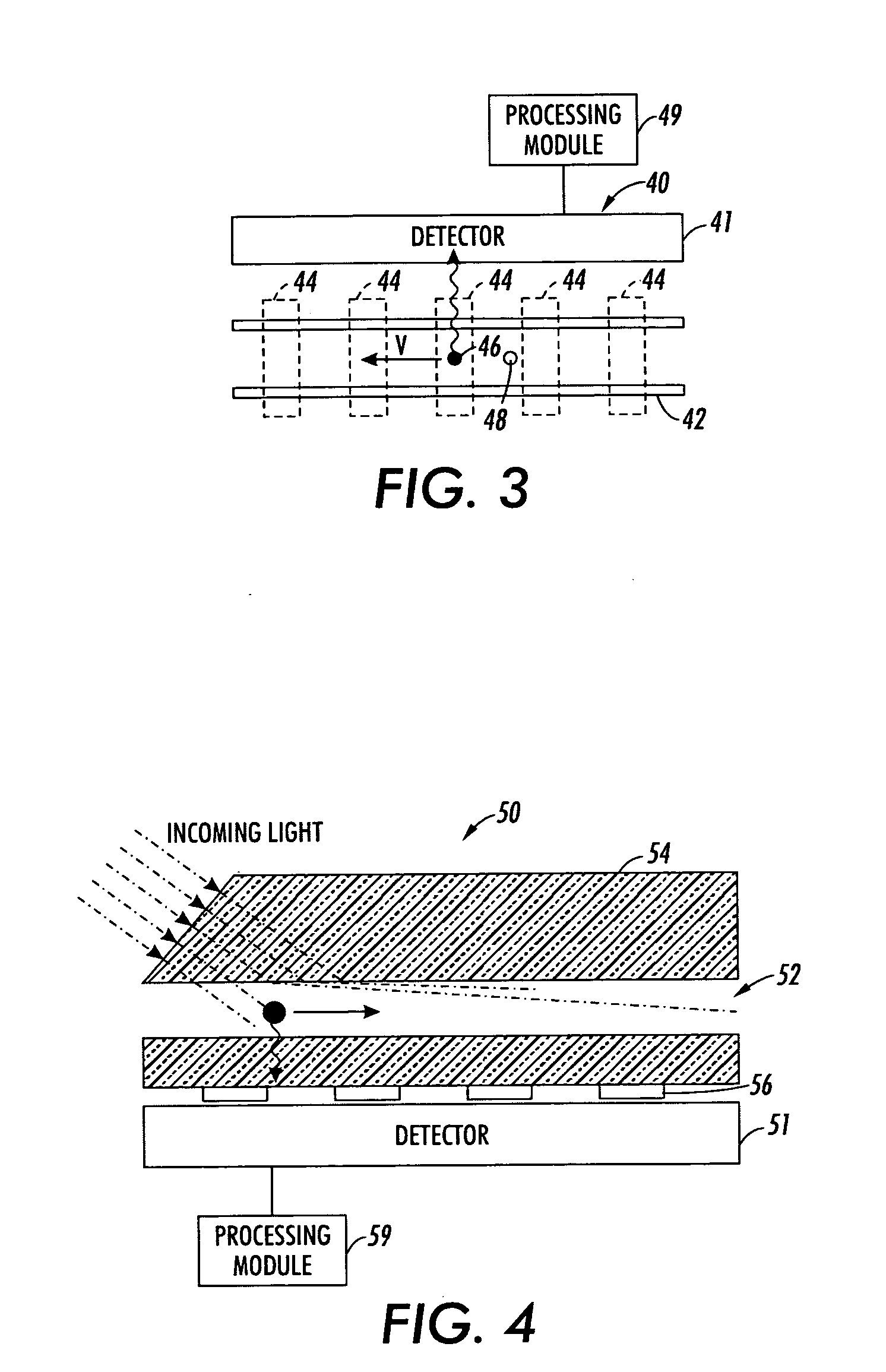Method and system implementing spatially modulated excitation or emission for particle characterization with enhanced sensitivity
a particle and spatial modulation technology, applied in the direction of material analysis through optical means, instruments, disinfection, etc., can solve the problems of low signal-to-noise ratio (snr), requires sophisticated and bulky optics, and the signal-to-noise ratio is lower than desired
- Summary
- Abstract
- Description
- Claims
- Application Information
AI Technical Summary
Benefits of technology
Problems solved by technology
Method used
Image
Examples
Embodiment Construction
[0053]This patent application describes a method and a system to improve the signal-to-noise ratio during particle characterization by implementing a phase sensitive technique which allows for clearly distinguishing between the signals from the particle and the background. The method is based on the deliberate introduction of controlled relative movement between the particle and the environment. The combination of, for example, the moving particle and a conditioned environment results in a time modulated signal. A monitored response comprises a noisy background signal and the modulated signal, with a well defined time dependence attributable to the particle. Both hardware and software solutions can be applied to extract the signal attributed to the particle.
[0054]It should be understood that the signal attributed to the particle can then be used in characterizing the particle for a variety of different applications, including detection, location / position determination, and cell sort...
PUM
| Property | Measurement | Unit |
|---|---|---|
| volume | aaaaa | aaaaa |
| frequency | aaaaa | aaaaa |
| modulation frequency | aaaaa | aaaaa |
Abstract
Description
Claims
Application Information
 Login to View More
Login to View More - R&D
- Intellectual Property
- Life Sciences
- Materials
- Tech Scout
- Unparalleled Data Quality
- Higher Quality Content
- 60% Fewer Hallucinations
Browse by: Latest US Patents, China's latest patents, Technical Efficacy Thesaurus, Application Domain, Technology Topic, Popular Technical Reports.
© 2025 PatSnap. All rights reserved.Legal|Privacy policy|Modern Slavery Act Transparency Statement|Sitemap|About US| Contact US: help@patsnap.com



